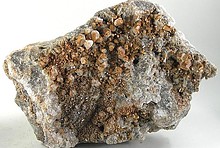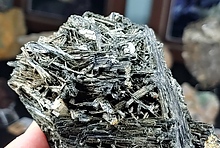Home PageAbout MindatThe Mindat ManualHistory of MindatCopyright StatusWho We AreContact UsAdvertise on Mindat
Donate to MindatCorporate SponsorshipSponsor a PageSponsored PagesMindat AdvertisersAdvertise on Mindat
Learning CenterWhat is a mineral?The most common minerals on earthInformation for EducatorsMindat ArticlesThe ElementsThe Rock H. Currier Digital LibraryGeologic Time
Minerals by PropertiesMinerals by ChemistryAdvanced Locality SearchRandom MineralRandom LocalitySearch by minIDLocalities Near MeSearch ArticlesSearch GlossaryMore Search Options
The Mindat ManualAdd a New PhotoRate PhotosLocality Edit ReportCoordinate Completion ReportAdd Glossary Item
Mining CompaniesStatisticsUsersMineral MuseumsClubs & OrganizationsMineral Shows & EventsThe Mindat DirectoryDevice SettingsThe Mineral Quiz
Photo SearchPhoto GalleriesSearch by ColorNew Photos TodayNew Photos YesterdayMembers' Photo GalleriesPast Photo of the Day GalleryPhotography
╳Discussions
💬 Home🔎 Search📅 LatestGroups
EducationOpen discussion area.Fakes & FraudsOpen discussion area.Field CollectingOpen discussion area.FossilsOpen discussion area.Gems and GemologyOpen discussion area.GeneralOpen discussion area.How to ContributeOpen discussion area.Identity HelpOpen discussion area.Improving Mindat.orgOpen discussion area.LocalitiesOpen discussion area.Lost and Stolen SpecimensOpen discussion area.MarketplaceOpen discussion area.MeteoritesOpen discussion area.Mindat ProductsOpen discussion area.Mineral ExchangesOpen discussion area.Mineral PhotographyOpen discussion area.Mineral ShowsOpen discussion area.Mineralogical ClassificationOpen discussion area.Mineralogy CourseOpen discussion area.MineralsOpen discussion area.Minerals and MuseumsOpen discussion area.PhotosOpen discussion area.Techniques for CollectorsOpen discussion area.The Rock H. Currier Digital LibraryOpen discussion area.UV MineralsOpen discussion area.Recent Images in Discussions
Identity HelpMagnetic rocks

12th May 2012 00:12 UTCAnonymous User
13th May 2012 00:10 UTCRalph S Bottrill 🌟 Manager

13th May 2012 12:50 UTCAnonymous User

13th May 2012 15:24 UTCSpencer Ivan Mather

13th May 2012 16:25 UTCAnonymous User
-------------------------------------------------------
> This isn't so unusual, many of these rock types
> have either magnetite or chromite inclusions.
Thanks Spencer do you have any trustworthy images of a small weak magnet sticking to rocks other than loadstone as i can't and boy ive tried, i would love to find an image of a simmiler magnet stuck to basaltic andesite, there has been lots of papers refering to compas deflection but ime yet to find one that refers to a magnet actually sticking to it!

13th May 2012 18:45 UTCSpencer Ivan Mather
Spencer.

13th May 2012 21:18 UTCAnonymous User
13th May 2012 21:26 UTCUwe Kolitsch Manager
???

13th May 2012 21:40 UTCAnonymous User
15th May 2012 13:13 UTCMark Willoughby Expert
I would suggest you read up on paleomagnatism to better understand the way the earth has undergone changes in polarity over time.
What the polarity of your dyke most likely shows is the movement of the tectonic plates in relation to the poles from the time the dykes forming through to today.
ie: a magnet placed on the dyke today, may point east-west, rather than north-south, this would show that at the time the dyke formed it was facing approx 90deg different to it’s current facing.
This change of direction is most likely caused by tectonic movement.
Other possible causes are; local movement in relation to earthquake(s) or movement in relation to local rock forming processes.
The difference between the current polarity of the dyke and polarity of the earth would in no way be related to paleomagnatism.

15th May 2012 21:55 UTCAnonymous User
Also you obviously know your stuff so could you do what no one proffesional or amature have managed yet, give me images of weak magnets attatched to basaltic andesite ? in the manor i have show on many tons of the stuff, the only other reference i have is rosedale iron stone funny enough not far south of here?
Cheers Heath.

18th May 2012 19:55 UTCAnonymous User




Mindat.org is an outreach project of the Hudson Institute of Mineralogy, a 501(c)(3) not-for-profit organization.
Copyright © mindat.org and the Hudson Institute of Mineralogy 1993-2024, except where stated. Most political location boundaries are © OpenStreetMap contributors. Mindat.org relies on the contributions of thousands of members and supporters. Founded in 2000 by Jolyon Ralph.
Privacy Policy - Terms & Conditions - Contact Us / DMCA issues - Report a bug/vulnerability Current server date and time: April 16, 2024 10:00:36
Copyright © mindat.org and the Hudson Institute of Mineralogy 1993-2024, except where stated. Most political location boundaries are © OpenStreetMap contributors. Mindat.org relies on the contributions of thousands of members and supporters. Founded in 2000 by Jolyon Ralph.
Privacy Policy - Terms & Conditions - Contact Us / DMCA issues - Report a bug/vulnerability Current server date and time: April 16, 2024 10:00:36











